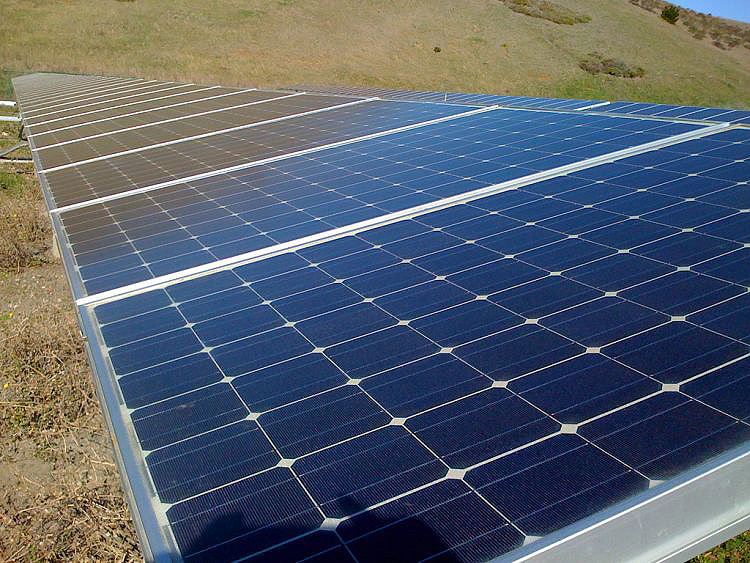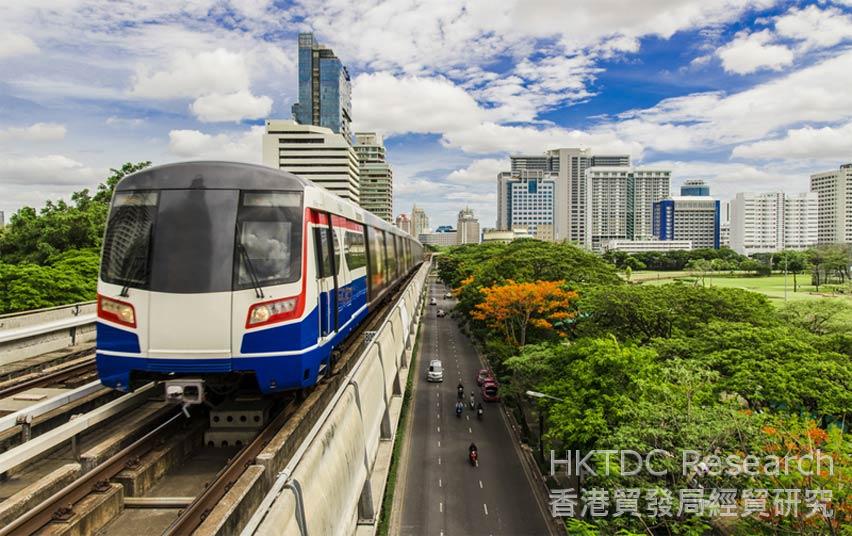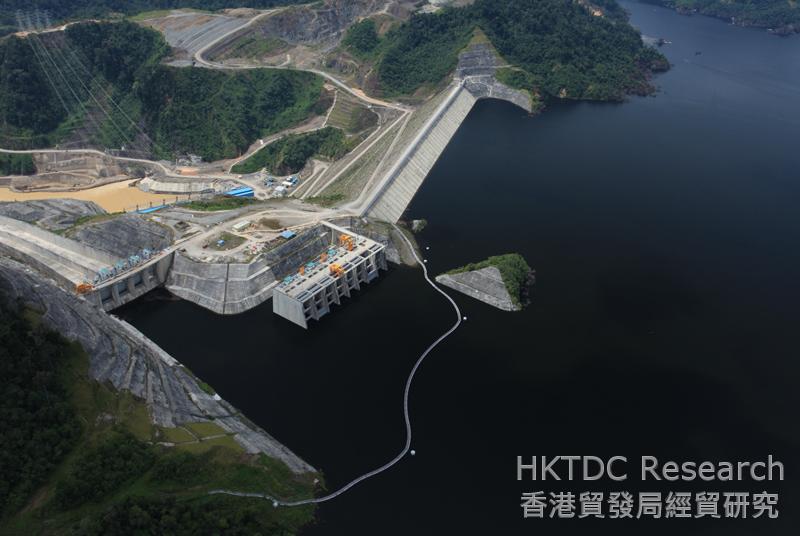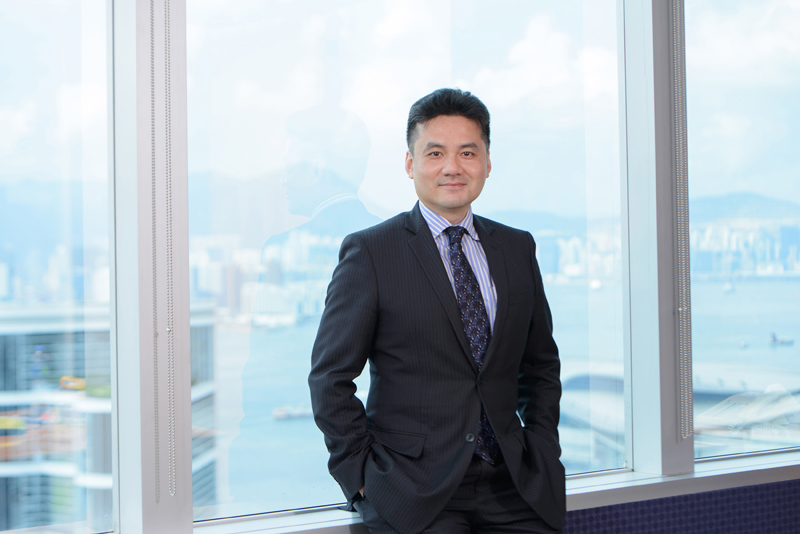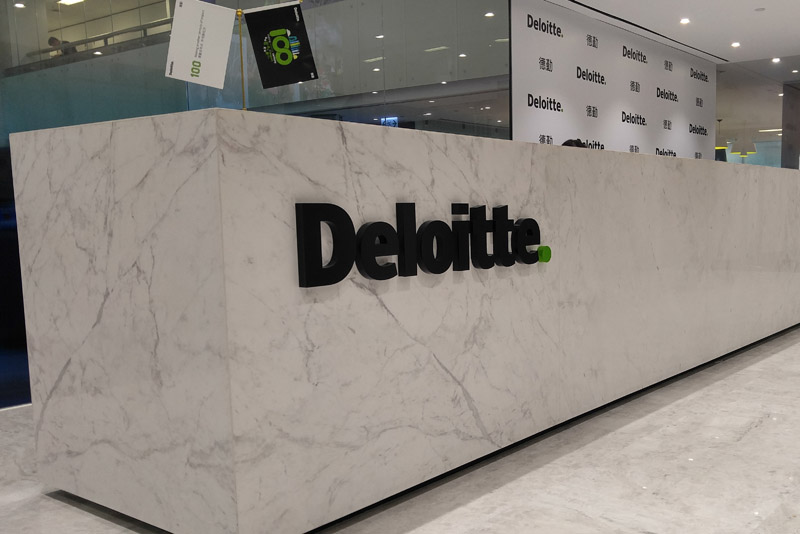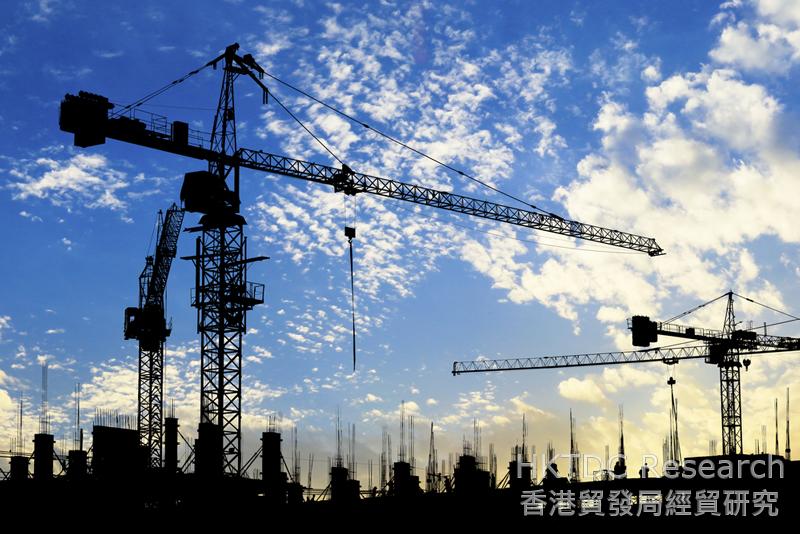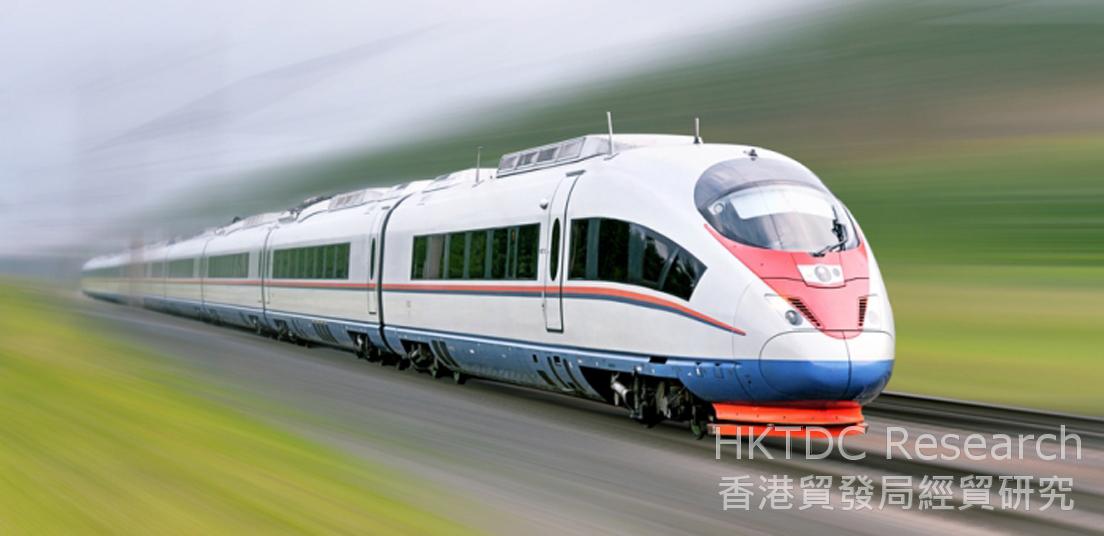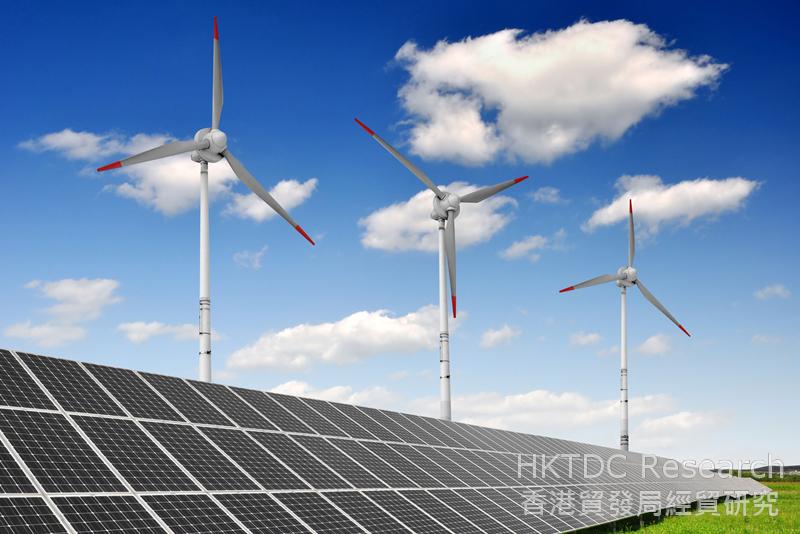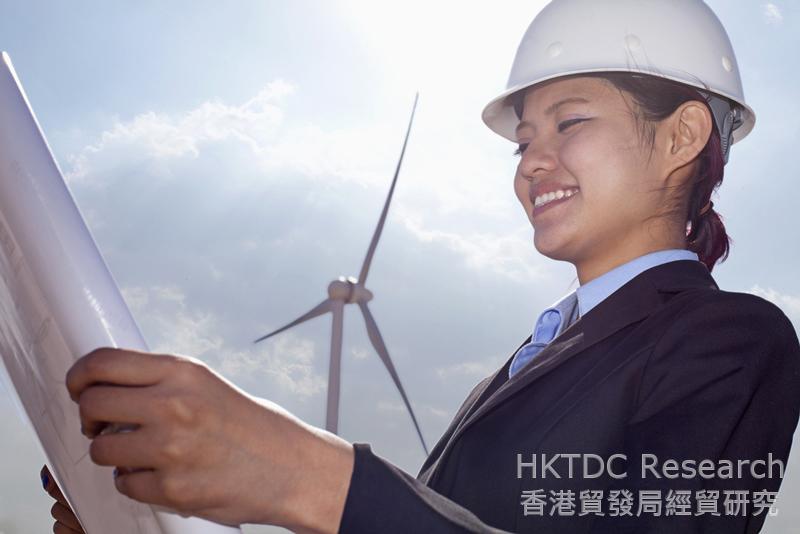By The Association of Southeast Asian Nations (ASEAN)
FDI flows into ASEAN in 2016 remained high despite a decline to USD 97 billion, which reflects the general downfall trend of global FDI flows into the developing economies.
FDI flows from most ASEAN Dialogue Partners and intra-ASEAN investment actually increased, with the latter reaching an all-time high and accounting for a 25 per cent share of FDI flows into the region.
However, these increases were not enough to help overcome the decline which was due to divestment, acquisition of foreign assets by ASEAN companies in their home countries and repayment of intracompany loans by affiliates within the region.
Many foreign companies have a long historical association with the region, some dating as far back as the 1800s and they continue to invest and expand in the region.
This year’s Report examines the historical investment development of two Dialogue Partners of ASEAN, namely the European Union (EU) and India. Major multinational enterprises (MNEs) from these countries have been present in ASEAN in a wide range of industries. Many of them operate in multiple locations across the region in different segments of the value chains.
This year’s Report also features the development of economic zones in ASEAN. This is a welcome follow-up to the “ASEAN Guidelines for Special Economic Zones Development and Collaboration” adopted by ASEAN Economic Ministers (AEM) in 2016. ASEAN has at least 1,600 economic zones of various types.
These zones, ranging from free trade zones, export processing zones, IT parks to mega special economic zones, have played a significant role in the socioeconomic development in the region and in attracting FDI. Given the rapid economic growth and demand, ASEAN Member States continue to develop more economic zones to boost FDI.
Policy makers, entrepreneurs, and other stakeholders may find this Report useful in understanding economic zones in ASEAN, as well as the business and investment development in the region in general.
Please click to read full report.
Editor's picks
Trending articles
Joint venture solar facilities earmarked for powering East Coast Rail Link and Southeast Asia port expansions.
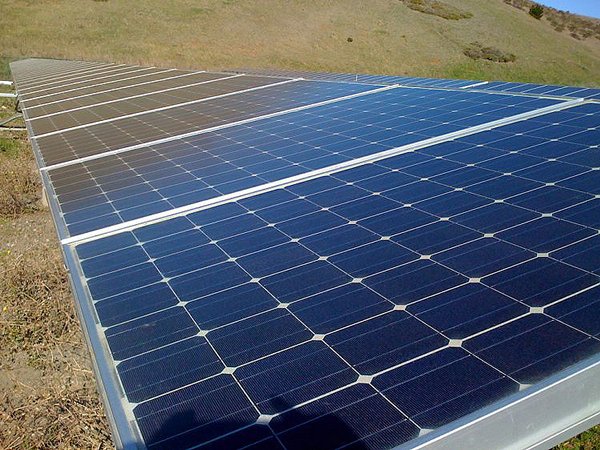
China has announced it is to back moves to build Malaysia's biggest solar-power plant. The project will see a 61MW solar facility established at a 110-hectare site in Kuantan, the capital of Pahang, Malaysia's third-largest province. From Malaysia's point of view, the installation marks one more step on its road to establishing a clean-energy network, while China sees the facility as vital for powering the further Southeast Asian expansion of the Belt and Road Initiative (BRI), the country's ambitious infrastructure development and trade facilitation programme.
Under the terms of an agreement reached at the end of last year, the Nanjing-based ET Solar and Northwest Electric Power Design Institute (NWEPDI), a division of the China Power Engineering Consulting Group, will work with UiTM Solar Power, a Selangor-headquartered solar photovoltaic developer, to build and operate the new facility. When completed, it will be the largest of the 42 new solar installations scheduled to be built at sites across Peninsular Malaysia, Sabah and Labuan in the run-up to 2020. Malaysia's Energy Commission hopes to bring 360MW of new solar power capacity on-stream over the next three years.
The Kuantan facility is expected to generate enough clean energy to power 80,000 households when connected to the national grid in November this year. ET Solar's second major Malaysian project, it comes in the wake of the company's work on a number of large-scale installations across the world, including sites in the UK, the US, Germany, Japan, South Africa, Chile and Turkey.
Its first project in the country was commissioned in April last year and saw the company establish a 12MW solar-power plant in the northern Kedah state. The facility came online at the end of last year and currently generates enough energy to power more than 5,000 households.
Apart from Chinese companies, South Korean businesses have also lent their expertise to help meet Malaysia's clean-energy aspirations. In December last year, the Seoul-headquartered Hanwha Energy Group announced it had been appointed to install and manage a 48MW solar-power facility in the northwestern Perlis state. With construction work scheduled to begin next year, it is expected to power 15,000 households when it comes online in October 2020.
Taken together, the Kuantan, Kedah and Perlis solar plants form part of an evolving clean-energy network designed to generate electricity for commercial and household use. A proportion of their output has also been earmarked for powering a number of BRI-related infrastructure projects, most notably the East Coast Rail Link, the expansion of Kuantan Port and the completion of work on the Pan-Borneo Highway.
The facilities are also key elements in the Malaysian Solar PV Roadmap 2030, which is likely to be unveiled later this year. The work of the Malaysian Investment Development Authority, the Roadmap is expected to act as the blueprint for delivering the country's integrated solar-energy ambitions.
Prior to the official unveiling of the Roadmap, a number of the expected proposals have already been enacted. In October last year, for instance, work began on stepping up the manufacture of solar photovoltaic cells, with the country aiming to be the world's second-largest manufacturer, after China, of such units – vital links in the solar-power generation chain.
Over the medium-term, more opportunities are expected to emerge for BRI investors as Malaysia continues to prioritise the expansion of its sustainable-energy sector in a bid to cut greenhouse emissions, reduce the nation's reliance on its oil and gas reserves and improve energy efficiency, while also bringing down the overall cost of power generation. The country is aiming to produce 2,080MW of energy from renewable sources by 2020, with solar power accounting for more than half of that total.
Geoff de Freitas, Special Correspondent, Kuala Lumpur
Editor's picks
Trending articles
Speech by Mahmoud Mohieldin, Senior Vice President of the World Bank Group
Good morning. I am very happy to represent the World Bank Group at this opening ceremony to discuss an initiative which has the potential to impact billions of people. Before I give my remarks, I want to acknowledge Mr. LI Yong, Director General of UNIDO, Mr. Heinz Fischer, former President of the Republic of Austria, Mr. WANG Xiaotao, Vice Chairman of the National Development and Reform Commission of China, Ms. Debora Serracchiani, President of Region Friuli Venezia Giulia in Italy, and Mr. WU Zhong, Director General of the Finance Center for South South Cooperation (FCSSC) and congratulate UNIDO and the FCSSC for organizing and supporting this important event.
This place, the UNIDO headquarters, reminds me of the pyramid builders. You know pyramids as massive constructions which last forever. And one of those contemporary builders was a fellow Egyptian Ibrahim Helmi Abd-elRahman, who was the first and founder Executive Director of UNIDO. He is known back home as a scientist specialized in building institutions, globally like UNIDO, nationally, like the Institute of National Planning, and he spent the rest of his life until he passed away 20 years ago building institutions for development in his home village, which is also mine. What he did is very relevant to today’s topic on how to link global initiatives to national policies, with local impact.
The Belt and Road Initiative has the potential to be global in its reach, but local in its impact. It will reach 65 countries -- potentially affecting 4.4 billion people and leveraging 40 percent of the world's GDP. Huge investments will be channeled toward infrastructure projects across Asia, Africa, and Europe. Six new land corridors will be rehabilitated, and maritime connectivity will be improved. And it has the potential to help countries reach their national objectives embedded in the Sustainable Development Goals, in areas such as jobs, poverty, infrastructure, and sustainable cities.
This initiative can be transformative for all cities along the new corridors, and could bring unprecedented opportunities for their economies and their population. The vision behind these investments supports an economic agenda to promote trade across domestic and international borders, thereby seeking to enhance prosperity among local populations.
It is important that the projects embedded in the initiative promote economic growth in a way which ensures a fair distribution of benefits within and across cities. To be consistent with the Sustainable Development Goals, they should also promote social inclusion, adequate financing, environmental sustainability and inclusive economic growth.
Lower costs and travel time increases the mobility of firms and workers, but this also increases the competition between cities for jobs and talent. We know that big transformative infrastructure projects might be associated with concentration of resources in a few places, and the newly created benefits might be unequally redistributed within and between cities.
How can we maximize welfare impacts and avoid adverse consequences? For cities along these corridors, transport infrastructure is a necessary but not wholly sufficient condition for development.
Complementary policies and investments -- in addition to transport infrastructure – will be critical if we are to leverage more fully these large corridor investments. This includes better spatial and land use planning, improved policy and regulatory investment frameworks, a healthy business climate, and strengthened trade facilitation and logistics capabilities.
Ensuring that the new infrastructure is low-carbon and climate-resilient is equally important. When implementing such ambitious transport projects, it is important to include improved environmental regulation, pollution reduction measures, and incentives for the adoption of new green technologies and higher environmental standards.
Science, Technology, and Innovation – key multipliers for reaching the SDGs – are critical to position cities with the technology of tomorrow, not just the legacy technologies of today. Access to data will be essential to the development of new technologies and their application to key industries.
Uncertainties on the financing schemes of such major investment projects raise concerns regarding the implementation and the equitable distribution of the financial burden across locations. Varied modalities of co-financing should be considered to ensure that there is sustainable infrastructure financing across domestic institutions and across countries, based on shared interest. New financing vehicles that can more efficiently bring together public and private resources should also be explored.
The World Bank Group is already deeply engaged in countries along the BRI corridor, based on our joint country partnership frameworks. The World Bank has commitments of about $80 billion dollars for infrastructure in Belt and Road countries, with numerous additional projects addressing infrastructure, trade, and connectivity in its project pipeline. Furthermore, the World Bank Group helps countries to address trade and connectivity issues by providing advisory services and analytics. IFC, our private sector arm, is engaged in numerous BRI countries supporting private sector engagement, and MIGA, the World Bank Group’s risk insurance arm, provides guarantees for outward foreign direct investment.
These opportunities and challenges for this ambitious project are immense, and we can indeed maximize its benefits if the partners – including host countries, the private sector, CSOs, international organizations, and many others – all work together closely. The World Bank Group is delighted to work with UNIDO and all the partners of the Belt and Road Initiative to maximize these investments for people and the planet.
Speech by Mahmoud Mohieldin, Senior Vice President of the World Bank Group. 2017. Belt and Road Initiative: A global effort for local impact. Connecting cities for inclusive and sustainable development. © World Bank. http://www.worldbank.org/en/news/feature/2017/09/26/bridge-for-cities-speech-by-mahmoud-mohieldin License: Creative Commons Attribution license (CC BY 3.0 IGO)
Editor's picks
Trending articles

In tandem with China’s increasing economic activity abroad, mainland enterprises are devoting greater efforts to developing their business worldwide. As well as expanding into international markets through trade and strengthening offshore sourcing to support production at home, many are also making outward direct investment (ODI) in developed economies in Europe and America. Some are seeking investment opportunities in Asian and African countries under the Belt and Road Initiative, in the hope of tapping the potential of these markets or utilising local resources to enhance their production capacity.
But investors are reminded that the support services required in making outward investment and conducting offshore trade are not exactly the same. Investors must acquire an in-depth understanding of the business environment of their investment destinations in order to ensure that their investment projects can be implemented smoothly. The rudimentary legal systems in some Belt and Road countries can create extra risks for investment. Hong Kong’s legal professionals, with their familiarity with overseas legal environments and business cultures, and their access to global resources through their extensive networks, are in an excellent position to provide due diligence services for mainland investors and help them control risks.
Private Enterprises Become Major ODI Players
Nowadays, a large number of private enterprises in China with financial clout are aggressively tapping into international markets and accelerating their offshore investment, in order to make better use of overseas resources and promote the sustainable development of their business. As a result, private enterprises are gradually replacing state-owned enterprises (SOEs) as China’s major ODI players. According to Ministry of Commerce figures, investment from non-SOEs (including private enterprises and joint-stock companies) rose from 19% of China’s non-financial ODI at the end of 2006 to 45.7% at the end of 2016. In 2016 alone, almost 70% of non-financial ODI came from these non-public sector investors[1]. In spite of this, there are still many mainland enterprises which find themselves lacking information on offshore investment, unfamiliar with the business environment in Belt and Road countries, and in dire need of professional services to help them expand their business abroad.

In an interview[2], Wang Xiaogang, Partner of King & Wood Mallesons, said: “China’s foreign trade is booming, and many mainland enterprises have been conducting international trade through Shanghai and Hong Kong. They use Hong Kong as a platform to handle business payments and receipts in foreign currencies, and take advantage of the innovative financial policy piloted in the Shanghai Free Trade Zone to move funds in foreign currencies or renminbi in a bid to raise financial and operational efficiency. They have thus become very skillful in trade operations. However, as enterprises make further ODI, relying on trade experience alone can no longer meet their business needs. In addition to considering issues such as business prospects and project financing of the investment concerned, they must also take note of the laws and regulations, tax policy and business environment of their investment destinations. Yet many investors are faced with the problems of insufficient information, language and cultural barriers, as well as a lack of understanding of the business practices of foreign countries, which have directly increased their risks of making offshore investment.”
He added: “Before going ahead with their investment, enterprises should assess different aspects of the project concerned. For instance, if they intend to set up production plants, transit warehouses or distribution facilities overseas, they must gain a good understanding of the business environment, labour policy and environmental requirements in the investment destination before they can identify risks and devise the necessary measures to ensure the smooth implementation of the investment project. Even in a case as simple as establishing a company in Hong Kong, they must first learn about Hong Kong’s immigration policy in order to make arrangements for management staff to come to Hong Kong. They must also have a clear understanding of Hong Kong’s tax policy so as to meet the necessary legal requirements and enjoy the relevant benefits. For example, in the Policy Address delivered by the Chief Executive of the Hong Kong SAR in October 2017, it was announced that the profits tax rate for the first HK$2 million of profits made by Hong Kong companies would be reduced from the current 16.5% to 8.25%, and that eligible R&D expenditure is entitled to 200-300% tax deduction[3]. Moreover, mainland enterprises can use the Hong Kong service platform to carry out tax planning for their international business and avoid unnecessary tax burdens.”
Professional Services Can Help Reduce M&A Risks
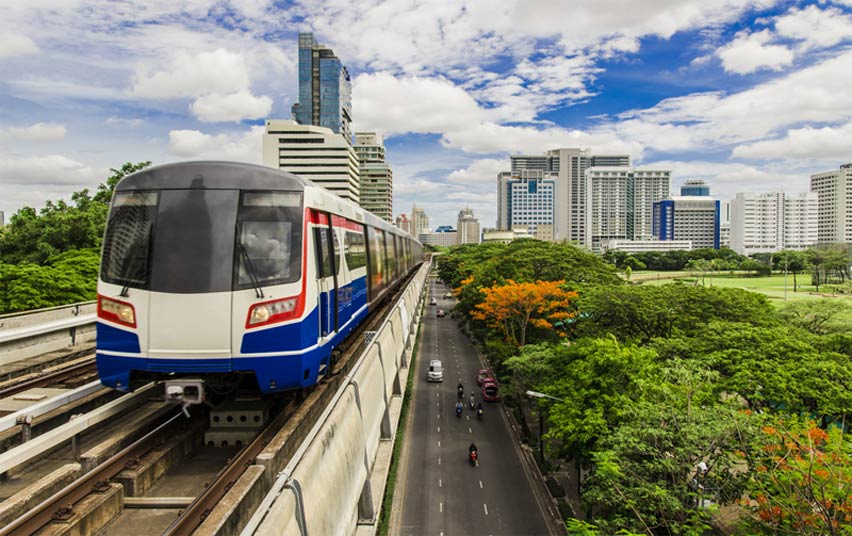
Mainland enterprises have also been very active in conducting merger and acquisition (M&A) overseas in recent years. Official statistics on foreign investment show that, in 2016, ODI in M&A by Chinese enterprises involved a total of 765 projects in 74 countries and regions. The amount of ODI in M&A projects reached US$86.5 billion, accounting for 44.1% of China’s total ODI in that year. At the same time, project financing funds worth US$48.8 billion were raised overseas, accounting for 36.1% of the M&A amount involved. These foreign M&A projects mainly covered manufacturing, information transmission, software and information technology services, transportation, warehousing and postal services, and power, heat, gas and water generation and supply[4].
Wang said: “The complexity of conducting M&A overseas is no less than that of making general direct investment. Apart from the above-mentioned risk management measures, investors must also have an in-depth understanding of actual conditions such as the equity, financial profile and assets of the M&A project. Investing in Belt and Road countries, especially in less popular destinations, can incur higher transaction risks since some countries may not have a sound legal system and their business practices may not align with international practices. Mainland investors are in great need of professional services to handle these problems. Hong Kong’s legal practitioners have extensive international networks and benefit from Hong Kong’s free flow of information. They can effectively lead professional teams from all over the world to carry out due diligence investigations for mainland enterprises’ investment projects, identifying and assessing problems in order to control investment risks.”
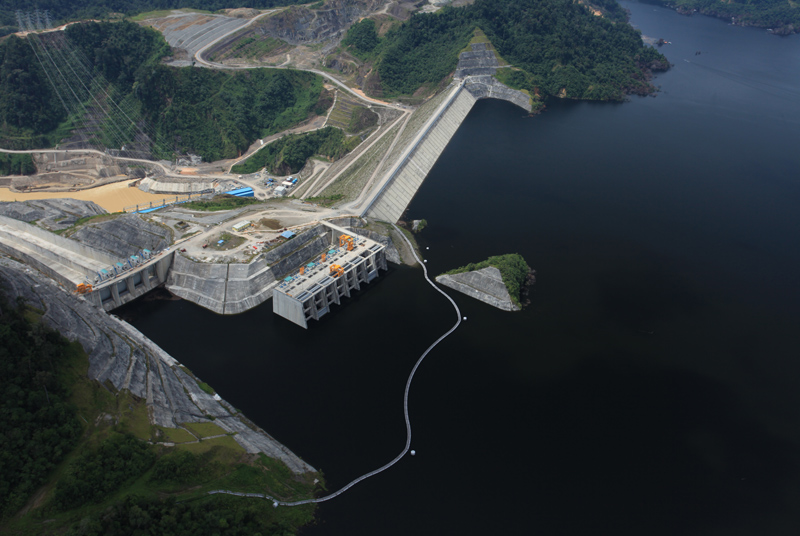
Asia-based King & Wood Mallesons is regarded as one of the most innovative law firms in the world. Currently, the firm has a team of over 2,000 legal professionals in 27 cities around the globe. It has set up offices in 11 mainland cities as well as in Hong Kong to help clients understand the business and investment environment in various countries and regions, and offer them the right solutions. King & Wood Mallesons’ Hong Kong office provides a comprehensive range of legal services to multinational corporations, investment banks, mainland enterprises and local clients. Using its lawyers’ professional knowledge and rich experience in the Asian market, King & Wood Mallesons also provides clients with professional services on cross-border transactions.
Note: For details of the company interviews conducted jointly by HKTDC Research and the Shanghai Municipal Commission of Commerce, please refer to other articles in the research series on Shanghai-Hong Kong Co-operation in Capturing Belt and Road Opportunities.
[1] Source: Statistical Bulletin of China's Outward Foreign Direct Investment 2016
[2] Representatives of HKTDC Research and Shanghai Municipal Commission of Commerce jointly conducted an interview with King & Wood Mallesons (Hong Kong office) in the fourth quarter of 2017.
[3] For details, please refer to The Chief Executive’s 2017 Policy Address, The Hong Kong SAR of the People’s Republic of China.
[4] Source: Statistical Bulletin of China's Outward Foreign Direct Investment 2016
Editor's picks
Trending articles
Budapest airport signs deal with leading mainland logistics business, with e-commerce tipped to be primary beneficiary.

As the Belt and Road Initiative (BRI) continues to roll out across Central and Eastern Europe (CEE), Budapest is looking to become one of the programme's key air-cargo distribution points. In order to deliver on this, late last year, Liszt Ferenc International Airport – the Hungarian capital's primary air-passenger and freight terminal – struck a new deal with STO Express, one of the mainland's largest logistics companies, which is expected to see the volume of China-origin freight channelled via Budapest soar.
The deal was finalised during last November's China-CEE Summit in Budapest and has seen the Hungarian airport designated as STO's official air-cargo hub for the wider region. As a consequence, the level of air-cargo throughput at the Liszt Ferenc facility is expected to grow substantially over the coming months, with a rise in the level of cross-border e-commerce items expected to be one of the major contributory factors. In order to fully facilitate this dramatic and rapid upturn in volume, EKOL, an Istanbul-headquartered logistics-services provider, is also party to the co-operation agreement with STO.
Commenting on the significance of the deal, Rene Droese, Liszt Ferenc's Director of Property and Cargo Services, said: "Export-import between China and Hungary, as well as the wider CEE region, plays a hugely important role in our rapidly developing market. With this agreement now in place, I believe that Budapest and its airport will provide the best solution for STO's distribution requirements in the immediate region and across Europe."
Immediately prior to the formal agreement, STO began running its first service via the Hungarian airport, with a cargo-load of e-commerce deliveries touching down in Budapest on 3 November. With the arrangement between the airport operator – Budapest Airport Ltd – and STO now formalised, the logistics company will run regular scheduled cargo flights between Hungary and a number of mainland cities. The service is expected to be widely used by many of STO's existing partner businesses, most notably Alibaba, the Hangzhou-headquartered e-commerce giant.
The deal with STO caps an already successful year for Liszt Ferenc, which saw its cargo throughput for January-October 2017 increase by 14.5% compared with the same period in 2016, taking its total cargo volume for the first 10 months of last year to 103,700 tonnes. Overall, the airport is said to have enjoyed 36% growth in cargo traffic since December 2015, a considerable achievement given the high levels of competition and the parlous state of its neighbouring economies.
At present, the airport is midway through its own extensive upgrade and expansion plan. Last year it completed a major refurbishment of its primary terminal, while also opening phase one of its dedicated business zone.
Meanwhile, work is still on-going on the construction of Cargo City, the airport's new and expanded cargo-handling facility. Scheduled for completion in 2019, it will have an annual handling capacity of 150,000 tonnes and provide a range of centralised cargo services, including facilities for handling companies and forwarders, customs processing points and certified storage for special cargoes, as well as a temperature-controlled zone.
In terms of the BRI, China's ambitious infrastructure development and trade facilitation programme, the CEE region is seen as of particular significance. As well as prioritising trade with a number of the rapidly emerging CEE economies – most notably Poland, the Czech Republic, Slovakia and Hungary – the region is also seen as a vital conduit between China and the mega-markets of Western Europe.
Beata Balazs, Budapest Consultant
Editor's picks
Trending articles
By LehmanBrown International Accountants
Opportunities the Belt and Road Initiative can offer Foreign Investors
By building greater connectivity and developing nations, once completed, the initiative will make it easier for large multinationals and start-ups alike to reach new large consumer markets. It has been estimated that the growing middle class in Asia could number 4 billion by 2021 and following on from this (according to HSBC) 66% of the world’s population could be living in Asia by 2030. This will mean a continuously growing buyers’ market in Asia demanding luxury goods and services. It is worth noting that the initiative will reportedly be open to all nations and not limited by geography. Thus, the benefits of easy access to a growing market will be accessible to all investors regardless of their geographic background. Consequently, through the initiative this immense market will be accessible for all.
The Belt and Road Initiative could be a good investment for private investors due to President Trump’s move to back out of the Trans-Pacific Partnership (TPP). The action means the Belt and Road Initiative is likely to gain more popularity and momentum as it is aimed at providing a vast network for international trade similar to the TPP. As the US are starting to become more introverted there is gap being left on the world’s economic stage which will likely be filled by China. This view is supported by Louis Kuijs, head of Asia Economics at Oxford Economics in Hong Kong. By investing in the initiative’s developing countries, investors are investing in creating more buying power and establishing efficient routes to fully utilise these new markets.
The Chinese government are encouraging a mixture of foreign investment and domestic investment in Belt and Road projects. Various banks and funds such as The New Development or ‘BRICS’ Bank and The Asian Infrastructure Investment Bank (AIIB) are providing loans for such projects. In 2016 AIIB committed $1.73 billion USD to nine development projects along the Belt and Road. According to the Articles of Agreement of the Bank they will “provide or facilitate financing to any member, or any agency, instrumentality or political subdivision thereof, or any entity or enterprise operating in the territory of a member, as well as to international or regional agencies or entities concerned with economic development of the Asia region”. AIIB has three main requirements for financing projects: sustainable in operation, environmentally friendly and widely accepted by public society. According to a China-Britain Business Council (CBBC) report, “immediate key sectors are infrastructure, maritime and logistics, banking and financial services, professional services and energy. Further opportunities also exist in the agriculture, fishing, food processing, light equipment manufacturing, education, tourism and consumer sectors.”
Currently there are many large corporations who are in cooperation with Chinese banks and companies in countries along the Belt and Road for example BP and CNPC who in 2015 saw the highest record of oil production in Iraq since 1990. Chinese enterprises such as Changan, China Mobile and BCEGI Construction and foreign owned enterprises such as Pinsent Masons and NVC lighting are finding many opportunities for their service and expertise along the Belt and Road in aiding the development of the initiative.
Key Investment opportunities
Banking and Financial services
Firstly, with the implementation of BRI there will be a large demand for expertise in complex financial tools, the participation of financial institutions in BRI will mean long-term access to capital and a more liquid and diverse market. Thus, companies investing in BRI will need both traditional services e.g. loans and settlements but also complex financial tools e.g. investment banking, third party agency facilities, risk control and financial management. Furthermore, BRI will push RMB to expand thus creating the need for overseas financial centres. Environmental sustainability is very important for BRI and much of it needs to come from private investors. This creates opportunities for financial intermediaries to support financial institutions and governments in identifying, monitoring, supervising and evaluating green projects as information disclosure and risk control become more in demand.
Many banks such as the Bank of China (BOC) and China Construction Bank are issuing billions of dollars’ worth in BRI bonds. The bond market e.g. Panda and Dim Sum Bonds, offers early access for foreign and private capital. Growth in BRI bond markets is likely to attract new bond issuers beyond Chinese banks thus creating greater opportunities for foreign enterprises. With the initiative, there is an increasing demand for commodities trading. This is evident by BOC launching 2 offshore global commodity business centres in Singapore and providing £40 billion in financial services to support Chinese and Singaporean companies who want to invest in BRI. For other foreign investors, opportunities lie in providing input for the fostering of secure, efficient and robust commodity trading and RMB commodity financial innovation.
The immense size of BRI and the nature of there being much risk in investing in the initiative means there are many opportunities in this field risk management and insurers. Insurers can develop novel insurance products and services to aid companies investing in BRI. In addition, there are more opportunities for asset managers to act as collective financing mechanisms who can provide smaller or private investors access to large infrastructure projects. This is promising as much of the funding for the initiative is expected to be from private investors.
Legal services
BRI investments require legal advice and services due to the complexities that emerge with operating in many of the BRI countries. Many countries along the Belt and Road have different policies and practices and so need specialised help to find a common understanding and follow the legal requirements. For example, Clifford Chance advised the Industrial and Commercial Bank of China, Bank of China, China Construction Bank Corporation and Export-Import Bank of China on £1.2 billion financing oil project in Jordan and Linklaters advised China Development Bank Corporation on the largest Chinese-led power project in Indonesia. In addition, many BRI countries are developing and thus have basic tax, accounting and audit regimes. However, investors must have an understanding of the differences. This provides the opportunity for foreign enterprises to aid Chinese enterprises in understanding local regulations and practices and assist them in following local tax and auditing laws. There are many opportunities for foreign enterprises in assessing investment environments and conducting feasibility studies as BRI requires strategic advice and practical business solutions. Examples of foreign companies who provided advice to Chinese parties includes JLT and PWC. China’s role in the shipping industry has grown and with it there are a multitude of legal requirements to be satisfied. A good opportunity for British investors lies in advising maritime services as English law is used in international maritime issues and processes. The size of this opportunity is immense given that China is currently producing 90% of the world’s standard dry cargo. BMT group and Pinsent Masons have already become involved in this prospect.
Infrastructure planning and development
Given the scale and nature of the initiative there are innumerable joint opportunities for international specialised companies and Chinese companies to build railways along the Belt and Road. Furthermore, there are numerous amounts of power generation and industrial development projects in BRI. Oil and gas pipelines as well as electricity transmission/distribution networks need to be sustainable and efficient and so need international specialists to aid these projects. In addition, water and waste management projects need specialists in city layouts, supporting regulatory frameworks, co-developing and operating the infrastructure. More infrastructure projects along the Belt and Road means increased supply chain manufacturing facilities and research centres in 3rd countries which provides many prospects for Sino-Foreign Joint Ventures. The development of the corridors increases the movement of goods, commodities and people thus requiring efficient logistics centres to cope with these ‘macro-flows’, DP world is an example of a company already invested in this project. In all the vast urbanisation projects across the Belt and Road there emerge many opportunities such as investing in education within these new cities.
Energy
Over half of the infrastructure funds along Belt and Road will go towards electricity supply thus meaning there are many opportunities in this sector. Areas in the ASEAN region have much gas and oil. There is thus, a demand for international expertise on marine environments, resource exploration, developments and optimal exploitation. The Keller Group are already involved in this opportunity. Similarly, coal/nuclear power generation requires legal, technical and operational/management support. Renewable energy projects are becoming more price competitive thus creating opportunities for smaller solar and wind power plants. In 2017 China announced a nationwide carbon trading market however, they need expertise on trading markets, carbon credit obligations schemes, regulatory frameworks and professional services that support planning and development. KPMG have already aided China in this area…
Please click to read the One Belt One Road full report.
Editor's picks
Trending articles
To keep up with globalisation and regional economic integration, while meeting the needs stemming from urbanisation and other socio-economic developments, countries all over the world are implementing a variety of infrastructure construction projects. They hope these projects will make their transportation, freight forwarding and logistics services more efficient, and improve services like energy supply, telecommunications and environmental facilities. According to the latest estimates made by the Organisation of Economic Co-operation and Development (OECD), on average about US$6.9 trillion is needed to invest annually in infrastructure projects around the globe between 2016 and 2030 to support sustainable economic development[1]. A report compiled by the Asian Development Bank says that an annual average of about US$1.7 trillion would be needed to invest in infrastructure during the same period in developing Asian countries alone, in order to satisfy the region’s huge demand for infrastructural facilities including transportation[2]. The past few years have seen a marked increase in mainland Chinese enterprises investing in or subcontracting overseas infrastructure projects under the Belt and Road Initiative. This increase is bound to fuel a rise in demand for related professional services from mainland enterprises, generating opportunities for Hong Kong service providers.
Financial Planning for Infrastructure Projects
China is not only among the world’s leading destinations for foreign direct investment (FDI), it is also its second largest source of outward direct investment (ODI). In 2016, the value of China’s ODI (US$196.1 billion) exceeded that of its inward FDI (US$134 billion). It also did so in 2015, making the country a net capital exporter for two consecutive years[3]. At the same time, the focus of China’s investment activities overseas has been gradually shifting from energy and natural resources to a diverse mix of sectors. According to figures released by the Ministry of Commerce, as at the end of 2016, the sectors which had received more than US$10 billion of ODI from China included leasing and commercial services, finance, wholesale and retail, mining, manufacturing, and information transmission/technology services, as well as infrastructure or related industries such as real estate, transportation/warehousing and postal services, construction industry, and power/heat/gas/water generation and supply. In recent years, China’s outward investment has also become more concerned with the merger and acquisition (M&A) of infrastructure projects. One example of this is the amount of investment in M&A projects involving transportation and power/heat generation and supply, which reached US$25 billion in 2016, about 19% of China’s total ODI in M&A that year.
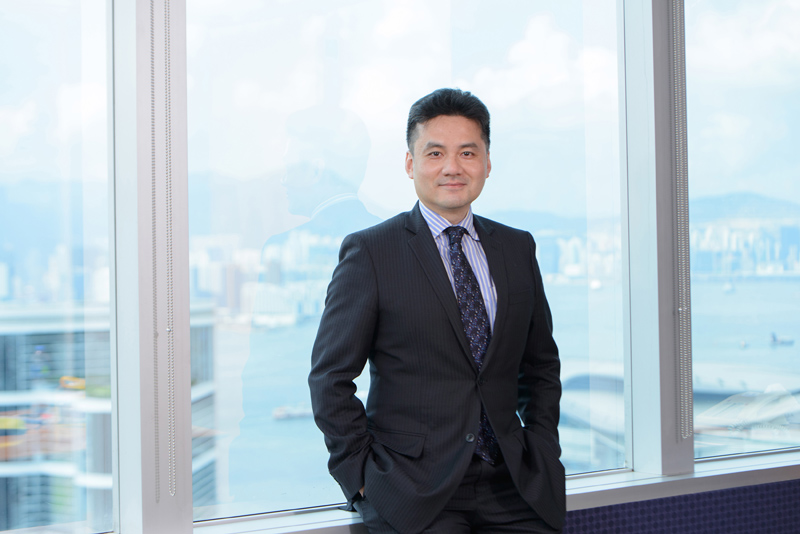
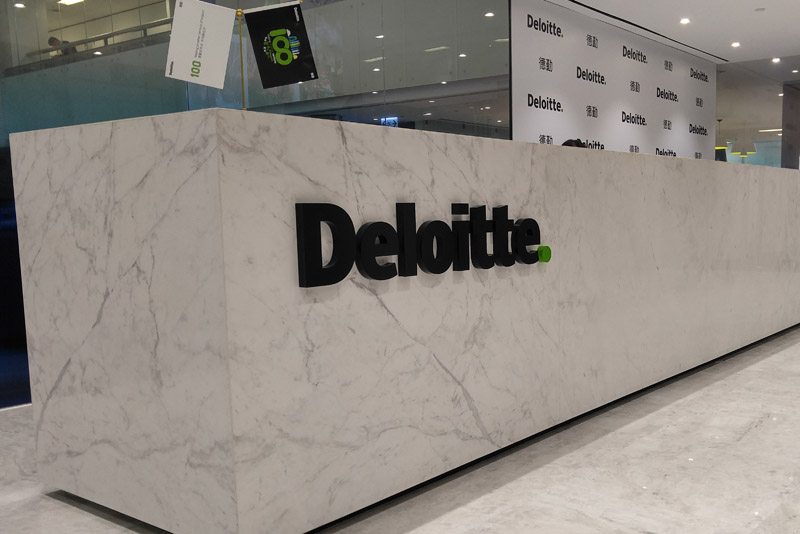
In an interview[4], Patrick W Yip, National M&A Leader and Partner (Tax & Business Advisory Services) of Deloitte China said: “Like [investment in] industries such as manufacturing or retail, investment in infrastructure projects overseas, including expressways, bridges, railways and power plants, also requires professional services such as financial, legal and accounting services, in order to ensure the sustainable development of these investment projects. However, the nature of investment in infrastructure projects is different to that in general projects, and the scope of the services required is also different. For instance, when mainland enterprises invest in M&A of technological projects overseas, the return on investment and depreciation period of the technology and equipment concerned will probably take about three years or so, whereas investment in infrastructure can easily take five or 10 years and the payback period often takes decades or more. In light of this, long-term development plans are required. The planning not only involves macro factors such as forecasts about the medium- to long-term economic and industrial growth of the country and region concerned, but also takes into consideration changes in urban development or the changing demand of facilities users as time goes by, as well as other external factors. Hence, contingency plans or measures must be formulated in the initial stage of the infrastructure investment plan in order to cope with changing environment and raise the flexibility of the investment.”

“Also, while currently most mainland enterprises are not short of capital sources, in light of the longer investment period and more uncertainty factors, the enterprises concerned would need to formulate the right financial solutions. For instance, they can take advantage of the Hong Kong service platform to bring a number of investors together in a consortium to participate in the investment projects, while utilising different channels to arrange for appropriate financing methods or syndicated loans in a bid to alleviate investment risks by increasing the number of stakeholders.”
Using Effective Networks to Conduct Due Diligence
Encouraged by the Belt and Road Initiative, mainland enterprises are increasing direct investment activities in countries along the Belt and Road. Investment in infrastructure, including roads, marine transport, aviation, energy, and communication projects, has become one of the key areas for mainland enterprises exploring Belt and Road opportunities.

However, Yip warned: “It is more important for mainland enterprises investing in infrastructure and other facilities along the Belt and Road to conduct effective due diligence, than it is when investing in developed economies. In some of the Belt and Road countries which are not popular FDI destinations, the legal systems and commercial regulations are far from advanced and their foreign investment policies may change as time goes by or with a change of government, which will directly increase the risks for investors. In fact, infrastructure projects may bring about far-reaching impacts on the economic and social development of the investment destination. Some projects may also involve land acquisition, environmental planning and environmental protection which could affect a great number of stakeholders. All these elements would have an impact on the feasibility or future development of the projects.”
“In view of this, mainland investors are in dire need of effective professional services in conducting due diligence in the initial stage of their investment plan, to identify various factors that may affect the project and thus exercise effective risk control. Hong Kong industry players, who have rich international experience and extensive international networks, can act as the service leaders to support mainland investors’ infrastructure projects overseas, co-ordinating service teams in different regions to collect the necessary information and make assessments. This, coupled with the comprehensive range of professional services available in Hong Kong, gives them an edge in carrying out effective due diligence on Belt and Road projects for clients.”
Deloitte is one of the world’s Big Four accounting firms. It provides audit and assurance, tax, management consulting, risk and financial advisory and related services for clients around the globe. Deloitte China is a member firm of Deloitte set up in China, with 21 offices across the country and a team of 13,000 professionals. Its offices in Hong Kong, Shanghai, Beijing and Chongqing are its four major operating arms. Deloitte China is also a Partner of the Infrastructure Financing Facilitation Office (IFFO) set up under the leadership of the Hong Kong Monetary Authority. IFFO aims to pool together major stakeholders to jointly promote infrastructure investment and financing activities under the Belt and Road Initiative.
Note: For details of the company interviews conducted jointly by HKTDC Research and the Shanghai Municipal Commission of Commerce, please refer to other articles in the research series on Shanghai-Hong Kong Co-operation in Capturing Belt and Road Opportunities.
[1] (1) Including the amount of investment needed to achieve climate-compatible growth; (2) Source: Investing in Climate, Investing in Growth, OECD, 2017
[2] Source: Meeting Asia’s Infrastructure Needs, Asian Development Bank, 2017
[3] Source: Statistical Bulletin of China's Outward Foreign Direct Investment 2016
[4] Representatives of HKTDC Research and Shanghai Municipal Commission of Commerce jointly conducted an interview with Deloitte China in the fourth quarter of 2017.
Editor's picks
Trending articles

Hong Kong is the third biggest financial centre in the world, behind only New York and London, with Singapore and Tokyo trailing behind. That is according to The Global Financial Centres Index 22, recently released by Z/Yen in London and the China Development Institute in Shenzhen [1]. Although Shanghai only ranks sixth on this list, it is still the leading financial centre on the Chinese mainland and has no shortage of financing channels. However, many Shanghai companies continue to carry out project financing through Hong Kong at the same time. In doing so, they hope to make use of the territory’s convenient capital movement to develop international business, and access different cost-effective resources to optimise their financing structure and sources of funds.
Making Flexible Use of Mainland and Overseas Financial Resources
Shanghai Electric Group Co Ltd (Shanghai Electric), one of the largest integrated equipment manufacturing groups in China, focuses on four major business segments: high efficiency and clean energy, new energy and environmental equipment, industrial equipment, and modern services. It is publicly listed both in Shanghai and Hong Kong. Although Hong Kong does not have an equipment manufacturing sector, Shanghai Electric runs a subsidiary in Hong Kong, hoping to use Hong Kong’s service platform to promote the development of the group.
Shanghai Electric specialises in a wide range of products, including thermal power generators, nuclear power generators, wind power generators, gas turbines, power transmission and distribution equipment, elevators, large and medium-sized electric motors, environmental protection equipment, machine tools, automation equipment and rail transportation. It has major production bases in Shanghai’s Minhang and Lingang districts. As part of its “going out” strategy and in order to make use of external resources to support its business development, the company – together with the associated Shanghai Electric (Group) Corporation – established the Shanghai Electric Hongkong Co Ltd in Hong Kong in 2001, and the Shanghai Electric Group Hongkong Co Ltd in 2010 (collectively referred to as Shanghai Electric Hongkong).
In an interview [2], Shanghai Electric Hongkong’s Executive Director and General Manager Dr. Jay Zhang explained why his company uses both Shanghai and Hong Kong to finance its projects. He said: “Financing channels on the mainland have gradually come of age. They are now capable of providing funds for mainland and even some overseas projects. In spite of this, Hong Kong with its advantage of free movement of funds and a financial market of great depth and breadth can offer businesses more financing choices. Since the Chinese mainland is not yet an integral part of the international financial market, there is bound to be some difference in financing cost between the mainland and the international market. Under the principle of market-based operation, Hong Kong can make use of different channels to source cost-effective funds. Thus, we make use of both mainland and Hong Kong platforms to raise funds for different businesses and investment projects. Actual cost-effectiveness is our primary consideration when choosing where to raise funds.”
Moving Funds Effectively for Investments Abroad
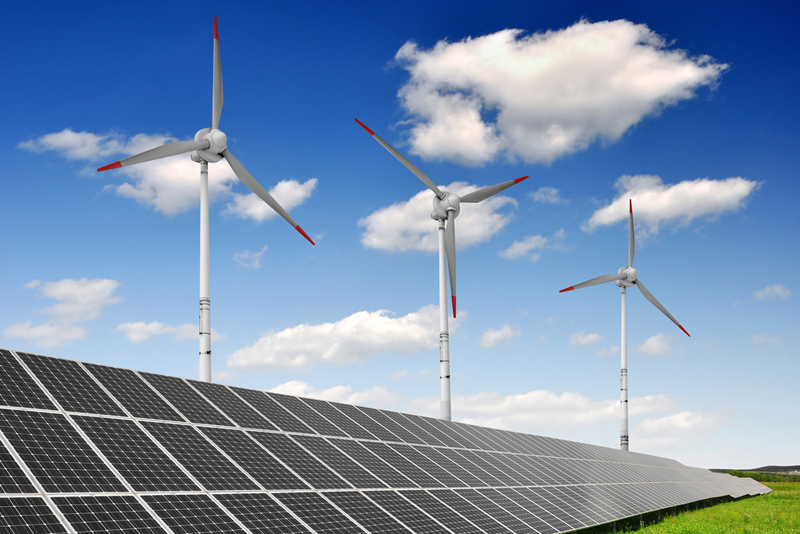
Shanghai Electric Hongkong is Shanghai Electric’s offshore platform for overseas investment and financing, capital operation and fund management. It conducts a variety of financial services in Hong Kong, including spot and forward foreign exchange transactions, foreign exchange hedging, trade financing and overseas financing. By combining the resources of the financial markets of Hong Kong and Shanghai, it hopes to promote the group’s strategy of internationalisation, developing transnational operations and upgrading its international competitiveness and brand reputation. Shanghai Electric Hongkong’s business mainly covers the following four areas: (1) offshore M&A and equity investment; (2) asset management; (3) corporate overseas treasury centre; and (4) trade business. Its registered capital amounted to HK$3.35 billion at the end of 2016.
“In addition to funds sourced locally in Hong Kong, we also raise funds from the international capital market through the Hong Kong platform for our investment projects,” said Dr. Zhang. “There is a chance that these funds may come from mainland institutions and investors. What is important about project financing is not so much the source of funds, but the convenience and cost of financing are the keys. Hong Kong is an international financial centre with the world’s largest offshore renminbi market. Through Hong Kong, we can more easily acquire cost-effective capital, including renminbi and US dollar, to increase our capital operation capability.”
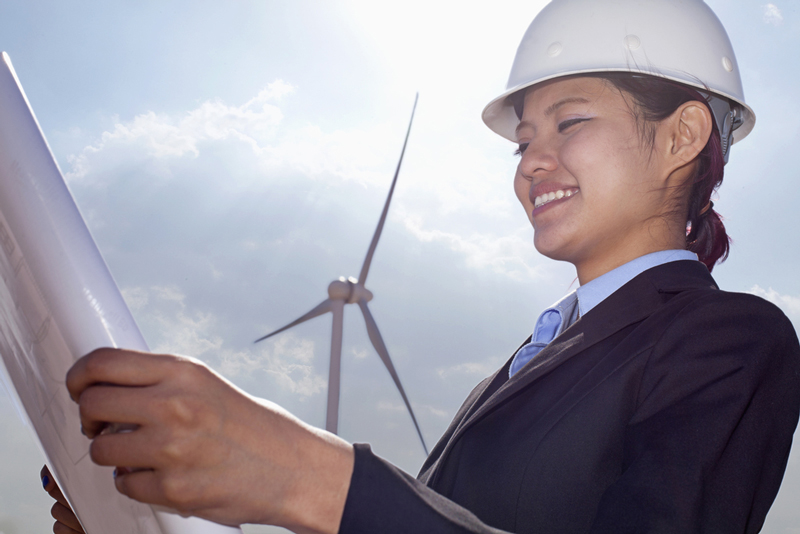
He added: “The mainland still retains considerable control over the cross-border movement of funds for international trade, overseas investments, and mergers and acquisitions, which may affect the flexibility of capital movement and increase the cost of investment and financing. Thus, we need to look for convenient overseas platforms to complement mainland financial resources in our endeavor to reduce cost and increase competitiveness.
“Hong Kong’s service platforms can help upgrade our overall financial efficiency. Its simple tax regime and convenient business environment can also contribute to the lowering of financing cost. For example, we manage our overseas investments from Hong Kong, but do not have to pay tax on profits derived from these ventures. [3] Besides, Hong Kong with its wide spectrum of accounting, legal and other professional services is an ideal service platform for our ‘going out’ strategy. They can help investors make global tax planning for international businesses and avoid unnecessary tax burdens.”
Note: For details of the company interviews conducted jointly by HKTDC Research and the Shanghai Municipal Commission of Commerce, please refer to other articles in the research series on Shanghai-Hong Kong Co-operation in Capturing Belt and Road Opportunities.
[1] Source: The Global Financial Centres Index 22, Z/Yen and China Development Institute, September 2017.
[2] Shanghai Electric Hongkong was interviewed by HKTDC Research and Shanghai Municipal Commission of Commerce in the fourth quarter of 2017.
[3] Hong Kong adopts a territorial basis for taxing profits derived from a trade, profession or business carried on in Hong Kong. Profits Tax is only charged on profits which arise in or are derived from Hong Kong. A person who carries on a business in Hong Kong but derives profits from another place is not required to pay tax in Hong Kong on these profits. For details, please refer to the website of the Inland Revenue Development at www.ird.gov.hk.
Editor's picks
Trending articles
Closer mainland-Saudi Arabia links, as well as fuel independence for southwest China, attributed to BRI.

As 2017 drew to a close, Amin Nasser, the Chief Executive of Aramco, the state-owned Saudi Arabian oil giant, confirmed that the company's discussions with PetroChina, the largest oil producer on the mainland, were now at an advanced stage. Should terms be agreed, Dhahran-headquartered Aramco will secure a 30%+ stake in PetroChina's Anning refinery. Located in the southwestern Yunnan province, the refinery – one of China's largest oil-processing facilities – came on line in October last year and currently has a throughput capacity of 260,000 barrels per day (bpd).
At present, the Anning facility solely focuses on supplying local needs. In the longer term, however, it is seen as having an intrinsic role to play in meeting China's future energy demands, with the country estimated to require at least 2.2 million bpd of refining capacity by 2022. In addition to its throughput, however, the site is also seen as having considerable strategic importance.
Set close to the Myanmar border, the refinery is in line for a key role in the Belt and Road Initiative (BRI), China's ambitious international infrastructure development and trade facilitation programme. More specifically, it is expected to help close the development gap between China's megacities and its underdeveloped eastern and western states, while improving China's "connectivity" with the rest of the world – two of the BRI's primary objectives.
The Anning facility is supplied by the Shwe oil and gas pipelines, which stretch back to the western Myanmar port of Kyaukpyu. With a total length of 770km, the pipelines – jointly funded by the China Development Bank and the Myanmar Foreign Investment Bank – source from a nearby offshore natural gas field and the regular oil shipments arriving at the port. Overall, it is hoped this new arrangement will free southwest China from its reliance on slow and costly oil shipments from the Middle East and Africa, with all of its fuel requirements, instead, offloaded in Myanmar and then piped overland.
For many in China, the Shwe pipelines are seen as among the first fruits of the BRI. From the Saudi point of view, the arrangement also has a number of clear benefits. The investment in Anning – expected to be in the region of US$1-1.5 billion – is the cornerstone of the Kingdom's game plan when it comes to regaining the market share it lost to Russia, currently China's primary supplier of crude oil.
One of the key elements in Aramco's approach has been to strategically invest in a number of target refineries, with the quid pro quo being that these installations are then contractually tied into solely (or largely, at least) processing the company's crude. In line with this, PetroChina has already tacitly acknowledged that the deal will lead to an increase in the proportion of Saudi oil processed in Anning.
The deal also paves the way for more Sino-Saudi joint ventures, while also rebooting relations between the world's biggest oil exporter and the world's largest crude importer, with Saudi Arabia clearly keen to move things along as swiftly as possible. Indeed, addressing the likely legacy of the deal, Khalid al-Falih, Saudi Arabia's Energy Minister and the Chairman of Aramco, has gone on record as saying: "Our goal is to be not only the largest crude exporter to China, but also the largest in-market investor overall."
As a further sign of colliding mutual interest, PetroChina is said to be considering buying into Aramco via its massive initial public offering – possibly the world's largest – that is expected to take place later this year. Meanwhile, for its part, Aramco is believed to be eyeing other petrocarbon assets in China. These will be in addition to its existing agreement with the China North Industries Group (Norinco), one of the mainland's leading defence contractors, to build a new refinery and a chemicals complex in northeast China. It also holds a 25% stake in a Fujian-based refinery operated by Sinopec, another of China's oil and gas giants.
Geoff de Freitas, Special Correspondent, Riyadh
Editor's picks
Trending articles
By Craig Sugden, external contributor to Lowy Institute for International Policy
China’s push for the new normal has seen its local governments convert to public-private partnerships (PPPs), long-term contracts between a private party and government to provide a public asset or service. More than 12,000 such projects worth around US$2 trillion have kicked off since public finance reforms were announced in late-2013.
China’s enthusiasm for PPPs has carried through to the Belt and Road initiative (BRI). Under the auspices of the lead planning agency, the National Development and Reform Commission, mechanisms were established in early-2017 to promote infrastructure PPPs for BRI. The promotion is to be through ‘along the way’ and ‘vicinity of the way’ mechanisms.
Others have added their support. Last month more than 130 countries and 70 international organisations, including the UN, the World Bank, and the IMF, attended the BRI Summit in Beijing. Those attending agreed on guiding principles on financing that encourage countries to open public service markets, and to develop PPPs to channel funds while improving the efficiency and quality of infrastructure.
It is easy to see why PPPs are being promoted for BRI. China’s budget is already stretched and it would struggle to directly finance the wide array of major projects envisaged under BRI. Many other participating countries also face tight budgets and PPPs are a way of mobilising alternative sources of finance.
For China, PPPs will alleviate pressure on the government with state-owned enterprises (SOEs) and state banks sharing responsibility for BRI implementation. Under the post-2013 reforms, the government is relying more on the social capital sector, which in China includes state-owned entities and the private sector. Reforms have opened public services to competition and eroded the widespread practice of simply allocating public projects to local SOEs.
But such an active role for these state-owned entities may raise concerns outside China. What will China Inc. hold for BRI countries?
China’s own State Council has expressed concern in its mix of SOEs and PPPs. There were calls last year for better protection of investor rights so the private sector can participate in fair competition with SOEs. There are other features of China’s PPPs to be wary of. Last month, central government agencies had to clamp down on local government's using PPPs as a means of backdoor borrowing. China’s PPPs tend to be relationship-heavy. Key issues - such as the pricing of services - are often not tightly defined up front in the contract process but left to be resolved by partners during implementation. Mixing a relationship-heavy approach to PPPs with the weak governance that is found in some BRI countries would carry obvious risks.
Yet China’s reforms have seen international practices adopted and adapted to fit the institutional setting. These changes were achieved with the help of the UK, where many good PPP practices originated, and international organisations like the World Bank. If Chinese entities work offshore the way they are meant to work onshore, many BRI countries could benefit from better infrastructure.
These observations lead to the identification of a potential role for Australia in BRI focused on PPPs.
Australia is one of the countries that has not signed onto the BRI, along with India, whose government stayed away from the May BRI forum, and Japan and the US, who are not mentioned in the forum’s communique. Australia is also not mentioned in the communique. The highest profile Australian contribution to the forum was a speech by former prime minister Kevin Rudd. Should Australia continue to keep its distance, or engage, as its neighbours Indonesia, New Zealand, and the Fiji Islands have done?
Views are divided. As is the case with many other issues involving China, opinion on BRI is torn between apprehension regarding China’s leading role and appreciation of the huge business opportunities on offer.
What is clear, however, is that PPPs can provide a natural niche for Australia. Australia can contribute to BRI by helping ensure that PPPs live up to their potential to deliver higher quality and lower cost services faster. By promoting good PPP practices, Australia can help avoid a free-for-all of unconstrained strategic or commercial interests.
Australia has one of the world’s best resumes on PPPs. It's a leader in delivering infrastructure and other public services through PPPs, with an enabling environment that defines good practice benchmarks. It has many skilled, experienced service providers, financiers, and advisors that can generate value for money through innovation.
Australia's aid program has helped other countries learn from the Australian experience. Much more can be done though to share Australia’s PPP knowledge of and resources in PPPs which may provide an alternative way of delivering essential public services that developing countries badly need.
The need for development partners to prioritise private sector solutions when deploying scarce public resources, including for infrastructure, was highlighted at the recent World Bank/International Monetary Fund Spring meeting. It is widely accepted that the post-2015 Sustainable Development Goals can only be met if private investment plays a bigger role in development.
Raising Australia’s presence in offshore PPPs would be in the national interest in that it would provide an outlet for particular skills and management practices, and provide new opportunities for Australian capital seeking the long-term investment offered by infrastructure.
If Australian service providers, financiers, and advisors win BRI projects, they will export good PPP practices. Project-level activity can be backed up by knowledge sharing with advocacy on how to do PPPs well. Australia can, for example, play a part in encouraging transparency in BRI projects including open competitive bidding.
Specialised investment funds have been set up by China, such as the Silk Road Fund, with billions of dollars in resources. The World Bank and the Asian Infrastructure Investment Bank are engaged in BRI, along with many other international organisations. So, the potential partners for Australian organisations are in place. Conditions are ready for Australia to take on a thought-leader role.
Australia took a bold step when it joined the Asia Infrastructure Investment Bank without the United States. It could now take another pragmatic step by assertively promoting good PPPs, using BRI as a platform.
The qualifier ‘good’ is an important one. Every country that is serious about PPPs has had some bad outcomes, such as projects that didn’t deliver the promised services, that strained the government’s budget, that cost investors dearly, or earned excessive profits. PPPs, just like conventionally delivered projects, can fail. Those who have been down this road before are well-placed to help others avoid the pitfalls.
Please click to read the full report.
